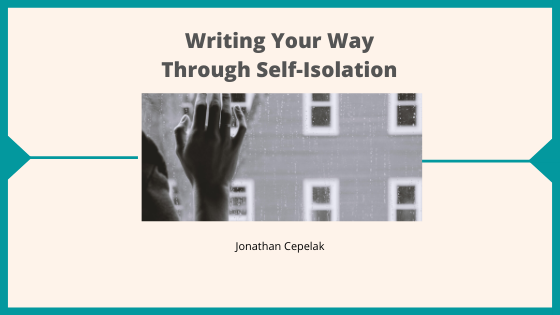
Right now, many people are struggling their way through the COVID-19 self-quarantine to protect themselves and loved ones from the virus. Feelings of loneliness and anxiety are natural and, for many, are at an all-time high. There are many resources people can turn to for help in coping, but one that costs little to nothing and is readily available for most individuals is writing. Writing can help people deal with emotions and process experiences. Some individuals find that writing and other creative pursuits help to stave off boredom and allow them to connect with others despite the self-imposed distance between them.
Even if you’re not someone who considers yourself a writer under ordinary circumstances, you can benefit from journaling and other writing activities during this time. I’ve taken the time to round up some of the reasoning behind why writing can help cope with emotional distress and some journaling and other writing activities that may be beneficial.
Separate Yourself from Your Thoughts
The situation with Coronavirus has created a great deal of anxiety in the vast majority of the population. Anxiety is a psychological response to a perceived threat, which increases the amount of stress hormones released in our body. While anxiety is a natural response, sustained exposure to elevated stress hormones in your body can compromise your immune system. Research shows that expressive writing can help boost your body’s immune response in times of hardship. This type of writing allows you to separate yourself from your anxious thoughts mentally. By writing down your thoughts and immediately physically destroying them, you can create separation from your thoughts. When you write, don’t stop to “analyze” your thoughts; you only reinforce thoughts (neuroplasticity) that you stop to analyze, so just get them all out on paper. You won’t get rid of the thoughts themselves when you destroy the paper they’re written on, but you do create a sense of separation from them in your unconscious mind.
Three-Column Exercise
Another writing technique that can help in times of elevated stress chemicals is based on cognitive behavioral therapy and addresses the three stages of neuroplasticity, your brain’s ability to reorganize and form new connections after a trauma. The three stages of neuroplasticity are 1) awareness, 2) separation, and 3) creation of new circuits.
At the top of each column, you’ll place a label. Label the first column, “negative thought,” the second “error in thinking,” and the third “rational thought.” This process will help you to gain awareness of the negative thoughts you’re having, separate yourself from those thoughts, and retrain your brain to handle stressors more rationally and productively.
In this type of writing exercise, separation from your thoughts comes in the form of the error in thinking column. Errors here could include things like “catastrophizing,” meaning always thinking the worst of a person or situation, “black and white” thinking or thinking only in extremes, and “should thinking” – what you should do, or ought to, and must do. Other common thought errors are labeling, emotional reasoning, and mind-reading. By having to categorize your errors in thinking, you are creating space from your initial reaction to the stressor. Once that space has been created, it is much easier to restructure your thoughts. Consistent use of this writing activity can eventually lead to an automatic reframing of negative thoughts.
While these writing activities aren’t really creative, they can be incredibly helpful in times of emotional distress. They can be used by nearly everyone and offer a safe outlet for the anxiety you may be feeling about the COVID-19 outbreak and its aftermath.
Article originally published on http://jonathancepelak.org/

